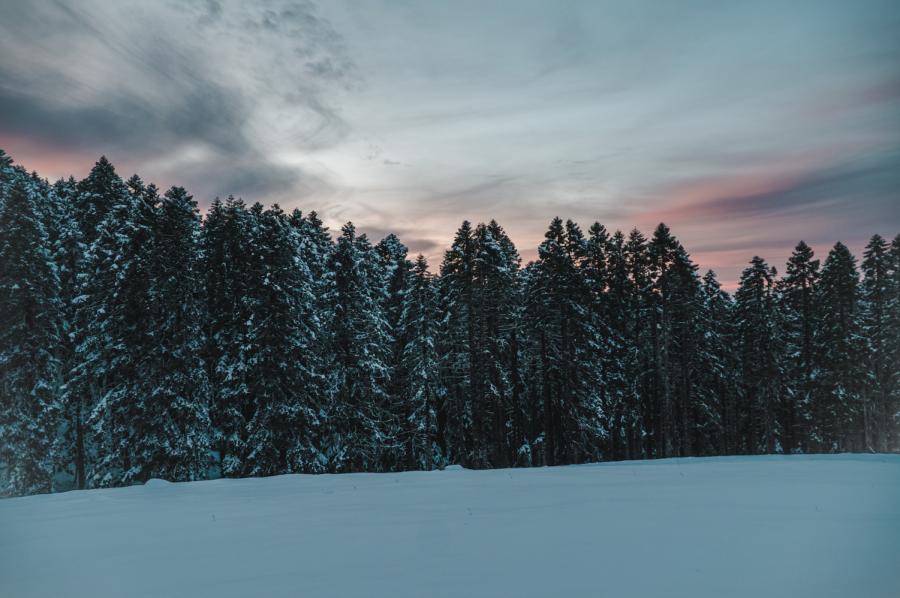Best of: Recreation
January 15, 2018
Marys Peak
Roads swirl around a mountainous peak and the excitement in the air rises. Glimpses of waterfalls can be seen off the road. When the car is finally parked, it’s a short walk to one of the first views on the Peak. The cascades are laid out on the picturesque setting with the ocean in the distance; and yet this view is only the beginning of what Marys Peak has to offer.
Marys Peak is a place where students can go, and do go, in order to hike, see the ocean, conduct research and experience this unique mountainous structure.
“It is what we call Oregon’s island in the sky,” Dave Eckert, a member of Marys Peak Alliance, said, quoting Bob Lilly.
Marys Peak is deemed so significant for three primary reasons, according to Eckert. The physical, ecological and cultural aspects of Marys Peak all play an important role in why it is so special.
“There’s nowhere else you can see that whole expanse, it’s just spectacular and gives us a sense of where we are and who we are,” Eckert said.
The physical aspect of Marys Peak is most outwardly seen, and most easily seen by the general public who go to Marys Peak. Emily Abrams, operations coordinator of The Adventure Leadership Institute, talks about how both physical activity course classes and ALI take advantage of the physical diversity provided by Marys Peak.
“We’ve done all sorts of activities up there, from hiking, to canyoneering, rock climbing and even cross-country skiing,” Abrams said in an email. “We go up there because there’s a wide range of activities we can do, and it’s super
close to Corvallis.”
ALI takes several classes up to Marys Peak throughout the course of the year including PAC 316 Rock 2 and PAC 313 Canyoneering, according to Abrams. The classes use the climbing area about halfway up the peak, and also program activities at a creek running along the road known as Parker Creek.
“It’s the highest peak in the coastal range of Oregon, and it serves as an iconic peak that separates the short journey from Corvallis to the coast,” Abrams said in an email.
Tim Schley, an Oregon State University student studying New Media Communications, has had the opportunity to take the classes which go up to Marys Peak and loved them.
“It’s an incredible classroom for our outdoor activities and classes,” Schley said in an email. “It’s a beautiful area and offers us a ton of opportunity for teaching and fun.”
According to Schley, he has also taken friends and family members up to Marys Peak to enjoy the view.
“Whenever friends or family come to visit, it’s one of the first places we visit,” Schley said in an email. “Whenever I see it on the horizon from I-5 I get excited because I’m almost home.”
PAC class participants and ALI aren’t the only people from OSU interested in Marys Peak though, according to Eckert. Marys Peak is consistently being used to conduct experiments.
“OSU has used Marys Peak as a research facility you might say, since the early ‘20s,” Eckert said.
A current research project occurring on Marys Peak is demonstrating how quickly one insect is adapting to climate change, according to Eckert. This research may have global significance as we learn how the Earth and its inhabitants can survive with changing atmospheric conditions. The special environment of Marys Peak is perfect for such studies.
“This project is making global significance and telling us a lot about climate change,” Eckert said.
According to Eckert, Marys Peak is not only important to members of OSU, but also to the local tribes. The cultural significance of Marys Peak is deeply rooted in history, and remains a place of great importance for the Confederated Tribes of Grand Ronde and Siletz. The Marys Peak Alliance works with these tribes in order to preserve cultural history and significance, Eckert added.
The MPA is currently working to name Marys Peak tributaries with the Confederated Tribes, according to Eckert. They are still going through the State and Federal naming process.
The MPA not only focuses their attention on cultural preservation, but also on land preservation, according to Eckert. MPA formed out of concern for a project the forest service was doing in regards to bulldozing on the land.
“We debated how we could deal with that and we thought the best thing was to work with them not to fight with them,” Eckert said.
Ever since then, the Forest Service and MPA have worked together with a mutual respect for one another, according to Eckert. The Forest Service considers what the MPA has to say and takes them seriously. Their partnership has ended up being beneficial to the Forest Service, MPA themselves and, most importantly, to Marys Peak, Eckert added.
“It’s just a nice place to be whether you’re alone or with other people,” Eckert said. “It just brings out the best in people.”

















































































![Newspaper clipping from February 25, 1970 in the Daily Barometer showing an article written by Bob Allen, past Barometer Editor. This article was written to spotlight both the student body’s lack of participation with student government at the time in conjunction with their class representatives response. [It’s important to note ASOSU was not structured identically to today’s standards, likely having a president on behalf of each class work together as one entity as opposed to one president representing all classes.]](https://dailybaro.orangemedianetwork.com/wp-content/uploads/2025/03/Screenshot-2025-03-12-1.00.42-PM-e1741811160853.png)























